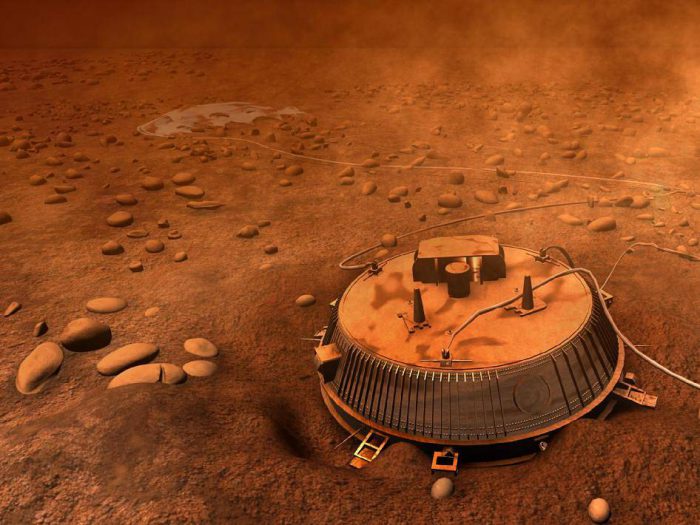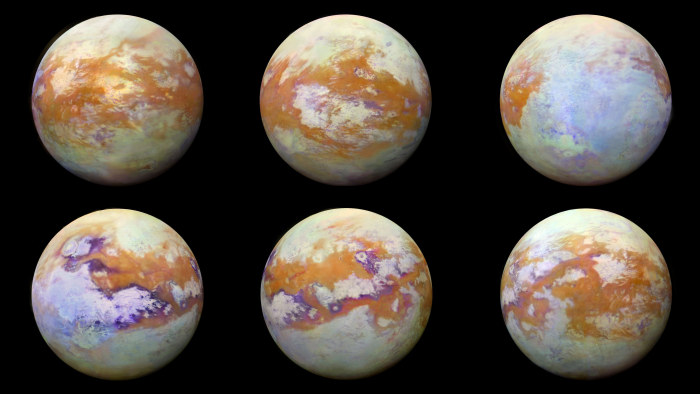Titan is the largest moon of Saturn, as well as the second largest in the entire Solar System. And though it is technically a moon—meaning it is a satellite, or body that orbits, a planet—it is more planet-like than some planets.
Bigger than Mercury, it is the only moon with a dense atmosphere and the only body other than Earth known to have stable bodies of liquid on its surface. Sure, these lakes and seas are made of methane and ethane, not water, but it is still a stunning fact. (And then there's the suspicion many scientists have that Titan has an enormous liquid water ocean under its surface!)
All of these things put together make Titan a very fascinating moon to study—you can see why NASA landed the Huygens probe on its surface in January 2005. And now we've discovered another special thing about the moon.
It has cyclopropenylidene (a.k.a. C3H2) in its atmosphere.
And that is ...?

An artist's concept of the Huygens probe on the surface of Titan. (NASA)
Hmmm. You're not that impressed? Fair enough. We'll be the first to admit that we didn't know what C3H2 was either. Or why it was significant. So let's investigate.
In short, C3H2 is one very rare molecule. On Earth, we can only reproduce it in labs. Not only does this molecule not exist naturally on Earth, it hasn't been seen yet on any planet or moon, in our Solar System or otherwise. The reason is that it is very reactive—this means that it easily combines with other molecules to form new compounds. So even when it does appear, blink a moment and it's gone.
Gone everywhere, that is, except for two places: deep space and on Titan.
For some strange reason, C3H2 seems to be happy to exist in Titan's upper atmosphere, staying stable miles above the surface.
What does this mean?
This is what scientists are so keen on understanding. Right now, they don't know for certain. But they have some theories. The big one? That this is a glimpse into what Earth might have been like billions of years ago at the beginning of life.
C3H2 is a carbon-based molecule—it has three carbon atoms (C3) and two hydrogen atoms in it (H2). And carbon is the key element to life on Earth. We humans are carbon-based life forms.
Meanwhile, even though Titan is the same age as most of the Solar System, its surface is what is known as 'geologically young'. It's still developing. Though much colder, Titan today has similarities to what Earth was like back at the start of the Archean era, four billion years ago. At the dawn of life.
"We think of Titan as a real-life laboratory where we can see similar chemistry to that of ancient Earth when life was taking hold here," says NASA scientist Melissa Trainer. So the question is: Does cyclopropenylidene mean something in terms of how life gets started on a world? Is this rare, but fairly basic, carbon molecule part of what rains down on the surface to form more complex organic molecules ... and eventually life?
For now, it's a question that we don't have enough data to fully answer. But you can bet that it will be something NASA will be looking to answer when the forthcoming Dragonfly probe is launched in 2027.
Dragonfly? What's that, you ask?
Check out this video to find out!











Cool! 😎 I can’t wait to hear more about the dragonfly!